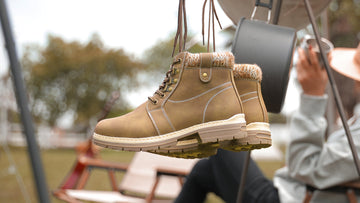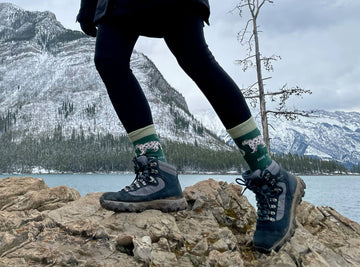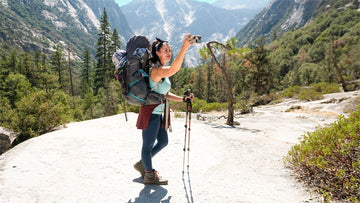Intro:
You’ve found the perfect pair of hiking boots — durable, supportive, and ready for adventure. But even the best boots can cause discomfort if they’re not worn correctly. Whether you're hitting your first trail or prepping for a high-altitude climb, how you wear your boots matters. This guide will help you maximize comfort, prevent injury, and get the best performance from your footwear — step by step.
1. Start with the Right Socks
Before your boots even touch your feet, start with the foundation: socks.
Choose:
Moisture-wicking materials like merino wool or technical synthetics
Medium cushioning to reduce friction and pressure points
Seamless construction to prevent rubbing on long hikes
Avoid:
Cotton socks (they trap moisture and cause blisters)
Socks that are too thick (which can affect fit and cause hot spots)
Tip: Try your hiking boots with the socks you’ll actually hike in — especially during break-in.
2. Perfect the Fit: Not Too Loose, Not Too Tight Fit is everything.
Here’s what to check when putting on your boots:
Toe room: Your toes should wiggle, but not slide
Heel hold: Your heel should stay secure with minimal lift
Arch alignment: Your foot should feel supported, not pinched or floating
3. Lace Them the Right Way,Proper lacing = comfort + security.
Here's how to lace like a pro:
- For Flat Terrain
Use a standard crisscross pattern, keeping even pressure through the instep and ankle. - For Uphill Climbs
Use a "heel lock" (also known as a "surgeon's knot") above the instep to prevent heel slip. - For Downhill Descents
Tighten the lower laces more than the upper ones to prevent toe jamming.
Pro tip: Take 2 minutes to re-lace mid-hike if anything feels off. Prevention is easier than healing.
4. Break Them In Before the Big Hike
New boots? Don’t take them straight to the summit. Ease them in with:
- Short walks or errands
- Local trail loops under 3 miles
- Gradually increasing load (try wearing your hiking backpack too)
- This molds the boot to your foot and allows pressure points to surface early — before you’re 10 miles in.
5. Pay Attention to Pressure and Hot Spots
While hiking, notice:
- Any rubbing, pressure, or numbness early on
- Heel lift or toe cramping
- Unusual fatigue in the arches or ankles
- Adjust your laces, socks, or insoles as needed. Sometimes, a quick tweak saves the rest of your day.
6. Care for Your Boots After Every Wear
- Wearing your boots right doesn’t stop when the hike ends:
- Remove insoles and let them air-dry
- Brush off dirt and debris with a soft brush
- Loosen the laces and store boots in a dry, cool place (not a sealed box or bag)
- Well-maintained boots = longer lifespan and more comfort on your next hike.
Final Thoughts: Every Step Starts with Fit
Your hiking boots are only as good as how you wear them. From sock choice to lacing technique to post-hike care, these small steps lead to big comfort and better trail days.
Already have your boots? Shop our Women hiking boots to complete your trail setup — because a good hike starts before you even leave the house.
Explore women hiking boots Series







